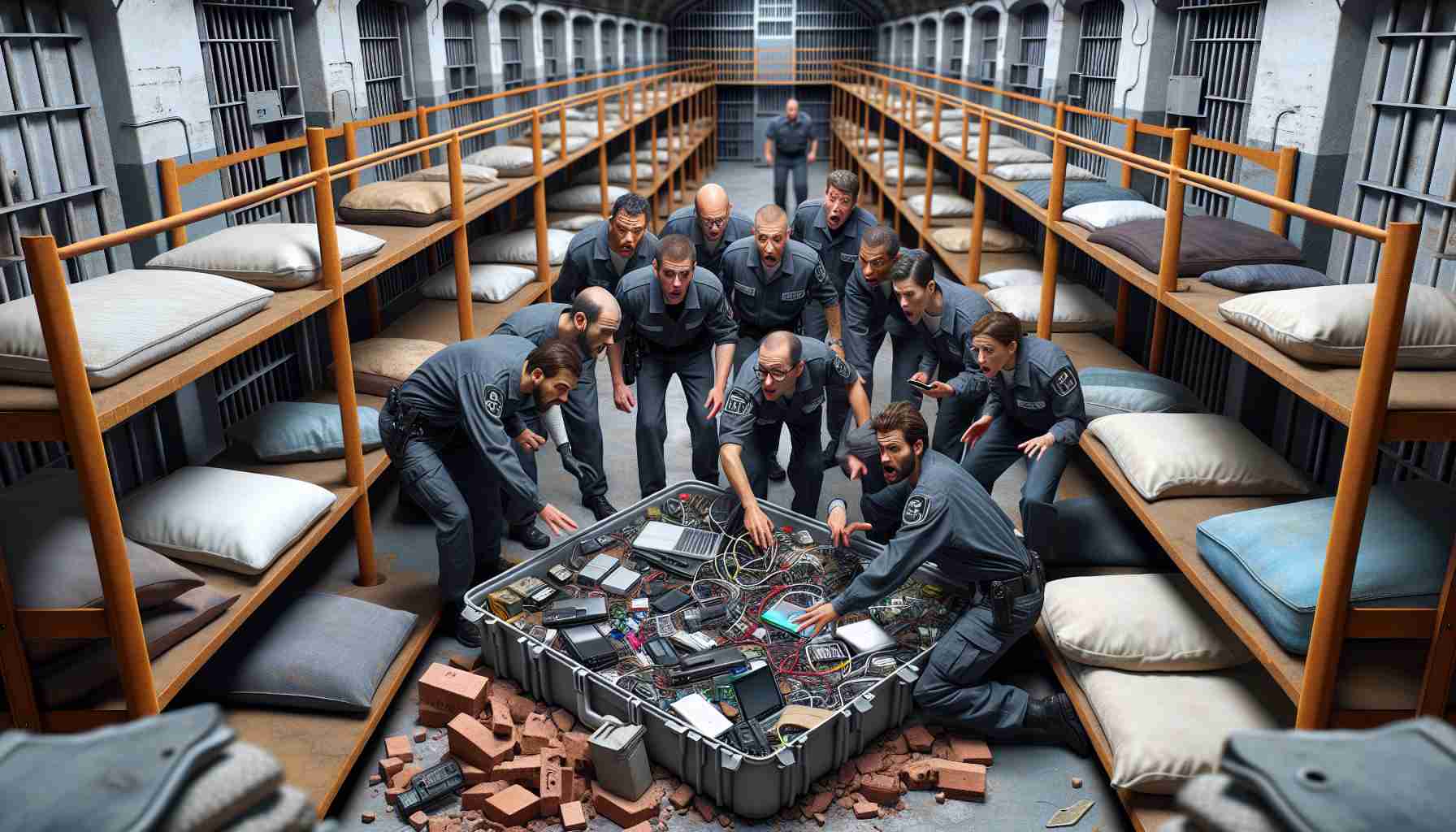Authorities at Avellino prison made a startling find during a routine search in the gym area designated for inmates with advanced treatment. Instead of eight chargers and six phones discovered initially, the search uncovered a stash of several smartphones and additional chargers hidden among the belongings of the detainees.
On a recent inspection led by Gaetano Aufiero from the Irpinian Bar Association and Michele Gubitosa, a prominent member of the Five Star Movement, concerning issues beyond the welcoming façade were brought to light. The overcrowding issue, with 150 more prisoners than the capacity of the facility, and the shortage of 80 officers compared to the mandated staffing levels were among the serious issues discovered.
Despite the acknowledgment of the dedicated efforts by the facility’s director and the prison staff, the delegation expressed deep concern over the inadequate mental health care provided to 150 inmates struggling with psychiatric conditions.
Discovery of Contraband Electronics in Avellino Prison Unveils Further Challenges and Concerns
During the recent sweep conducted at Avellino prison, authorities not only stumbled upon a hidden cache of smartphones and chargers but also uncovered additional unsettling realities within the correctional facility. Among these revelations, some critical points merit attention, shedding light on the underlying issues prevailing in the prison system.
One of the key questions that arise from this incident is how the contraband electronics managed to enter the prison undetected and what measures can be implemented to bolster security and prevent future breaches. The introduction of advanced scanning technology and stricter screening protocols could potentially mitigate the risk of such illicit items making their way inside the prison walls.
Furthermore, the discovery of overcrowding, with 150 more inmates than the facility’s intended capacity, raises concerns about the living conditions and safety of both prisoners and staff. Addressing this issue entails a comprehensive approach that involves potential renovation or expansion of the prison infrastructure, as well as exploring alternative sentencing options to reduce the overcrowded conditions.
The shortage of 80 officers compared to the required staffing levels presents a significant obstacle in maintaining order and ensuring the well-being of the inmates. This shortage not only impacts the day-to-day operations but also elevates the risks associated with managing a large inmate population. Recruiting and training additional staff members could alleviate some of these pressures and enhance overall security and control within the facility.
Another critical aspect highlighted by the inspection is the inadequate mental health care provided to inmates grappling with psychiatric conditions. Given the vulnerable nature of this population, the lack of proper mental health support not only undermines rehabilitation efforts but also poses ethical concerns regarding the well-being of the prisoners. Investing in mental health resources and specialized training for staff members could bridge this gap and improve the overall treatment of vulnerable inmates.
In conclusion, while the discovery of contraband electronics at Avellino prison has brought to light various challenges and deficiencies within the correctional system, it also underscores the pressing need for reform and investment in key areas such as security, staffing, and mental health care. By addressing these issues proactively, authorities can work towards creating a safer and more rehabilitative environment for both inmates and staff.
Advantages and Disadvantages:
– U.S. Department of Justice: Offers insights into best practices in corrections and law enforcement.
– United Nations Office on Drugs and Crime (UNODC): Provides global perspectives on combating contraband and enhancing prison security.
By leveraging the knowledge and resources shared by reputable organizations in the field of criminal justice, stakeholders can glean valuable information to drive meaningful improvements in prison management and inmate care.























